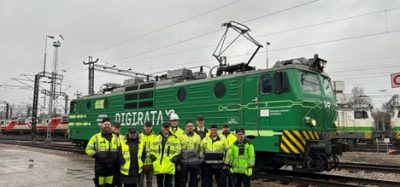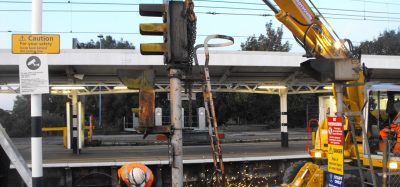Explaining the GSM-R project in Greece
Posted: 15 February 2011 | | No comments yet
The preparation, tendering and implementation phases of the GSM-R project in Greece are presented in a descriptive, but mainly explanatory type methodology. The objective was to introduce a new digital telecommunication network to replace the analog system along the main railway axis and provide the necessary interoperability for future roaming of border crossing trains. Although one would think that the technical specifications would present the major complexity, thanks to standardisation work done by the UIC/ERTMS group, it is in fact the administrative and commercial aspects of the project, such as government policy, environmental implications, stakeholder base, functional requirement gaps, operation and maintenance issues that introduce time and cost delays. The maturity of the project is established in phases and therefore a systematic and parsimonious approach in management is required. Lessons learned are based on return of experience from the people involved and the objective of this article is to ensure that the case can be used in other countries, which are already implementing or planning a GSM-R system.
The preparation, tendering and implementation phases of the GSM-R project in Greece are presented in a descriptive, but mainly explanatory type methodology. The objective was to introduce a new digital telecommunication network to replace the analog system along the main railway axis and provide the necessary interoperability for future roaming of border crossing trains. Although one would think that the technical specifications would present the major complexity, thanks to standardisation work done by the UIC/ERTMS group, it is in fact the administrative and commercial aspects of the project, such as government policy, environmental implications, stakeholder base, functional requirement gaps, operation and maintenance issues that introduce time and cost delays. The maturity of the project is established in phases and therefore a systematic and parsimonious approach in management is required. Lessons learned are based on return of experience from the people involved and the objective of this article is to ensure that the case can be used in other countries, which are already implementing or planning a GSM-R system.
The preparation, tendering and implementation phases of the GSM-R project in Greece are presented in a descriptive, but mainly explanatory type methodology. The objective was to introduce a new digital telecommunication network to replace the analog system along the main railway axis and provide the necessary interoperability for future roaming of border crossing trains. Although one would think that the technical specifications would present the major complexity, thanks to standardisation work done by the UIC/ERTMS group, it is in fact the administrative and commercial aspects of the project, such as government policy, environmental implications, stakeholder base, functional requirement gaps, operation and maintenance issues that introduce time and cost delays. The maturity of the project is established in phases and therefore a systematic and parsimonious approach in management is required. Lessons learned are based on return of experience from the people involved and the objective of this article is to ensure that the case can be used in other countries, which are already implementing or planning a GSM-R system.
Introduction
The objective was to build a new digital telecommunication system to replace the old analog 150 MHz STORNO, along the main Athens to Thessaloniki railway axis, which connects these two major cities, carrying more than 50% of the passenger load and 90% of freight (see Figure 1). The line would also be extended to the south to Kiato, situated half way from Athens to the port of Patras, which is the major gateway to Western Europe and to the north reaching the borders with Bulgaria and FYROM. It is a recently modernised 706km double-track line featuring 25KV electrification, supporting speeds up to 200km/h. It would also be equipped with ETCS Level 1 signaling. The scope would exclude a 120km mountainous section in mid-Greece (Tithorea to Domokos), the new alignment of which is still under construction.
In order to provide the necessary EU interoperability for future roaming of border crossing trains, the GSM-R system was selected. In addition, since there was no network backbone in place, the plan was to build a new FOC (Fiber Optic Cable) backbone network along the entire line. Funding was based on a shared cost model (EU and State funds). Project management (PM) was assumed by ERGOSE, the works daughter company of the infrastructure owner, Greek Rail (OSE).
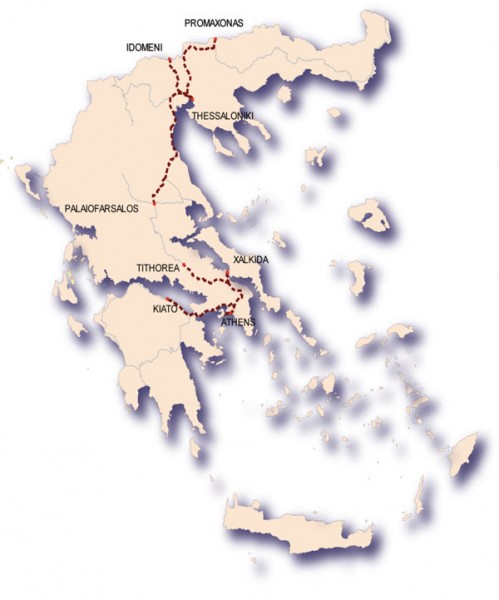

Figure 1 Railway track sections covered by GSM-R
Planning
Contract Type
A turn-key BOT (Build-Operate-Transfer) type of contract was deemed more appropriate for the project. The contractor would be responsible for the design, including the RF (radio-frequency) study, engineering, procurement, implementation, testing and commissioning, training of users and operating and maintaining the system for three years before transferring it to the owner. The approval process was based on meeting various KPIs.
The contractor would also be responsible for obtaining the required permits from the national and local authorities involved; however, the lobbying role to the authorities would be assumed by the PM.
This type of contract was mainly chosen, as due to the PM’s staff workforce, it was easier to manage. It also guaranteed a fixed budget, very important as the project was being co-funded by the EU. However, this was also a mixed blessing, since it was difficult to add or remove components as the implementation progressed. In addition, the main stakeholder involvement (infrastructure owner) was delayed.
Architecture
When the tender was published at the end of 2006, the UIC EIRENE FRS/SRS had reached version 7/15. This fact proved to be invaluable for the project, since version 7/15 now corresponds to the official baseline of GSM-R that all future releases should be backward compatible with in mandatory features.
Although the implementation of ETCS Level 2 signaling was not planned, the GSM-R RF planning was to fulfill a constraint of > -85 dBm signal level along the track, in order to facilitate smooth migration to Level 2 in the future, without building new base stations, if possible. In addition, due to the mountainous setting of the line and to increase system availability, double coverage with interleaved BSCs was specified (see Figure 2).
As a result of selecting this architecture, the network tests showed an increased tolerance against interference and/or blocking signals.
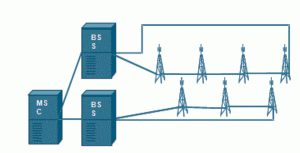

Figure 2 Double coverage interleaved BSC loop multi-drop connection
Equipment
Since there was no modern telecom infrastructure in place, a new fiber-optic cable backbone network was built along both sides of the line, in a buried HDPE conduit, thereby forming redundant loops. The fiber reaches all the way to the station (FTTS) and the dispatcher terminals. Also a new intelligent transport network based on SDH/STM-16 activated the fiber. However, this being an infrastructure project, it procured for dispatcher terminals for all major stations, but just 25% of the locos in operation and 5% of the handhelds, the latter two being the responsibility of the railway operator. Therefore, a separate tender is required for cab-radios and handheld mobile terminals.
Implementation
Frequencies and permits
The National frequency regulator must first approve the allocation of the GSM-R frequency band to the infrastructure owner, calculate the annual fees to be paid and then approvals have to be granted by seven authorities on a site-by-site basis, forwarded to the national frequency regulator to obtain the license to build and to the power company for connecting to the electricity grid.
The starting position of the frequency regulator, regarded the railway’s application as another GSM public provider; hence the annual fees calculated were very steep. In addition, the GSM-R frequency spectrum was in use by the military. Following several discussions, the frequency regulator proceeded with an open consultation for vested interest in the GSM-R frequency band by any third party, although this spectrum is specified by ETSI for GSM-R use only. A year later, the ending position held that the railway network is a private provider and that the military would share the GSM-R spectrum in case of emergency and only in specific areas. Also, the project would conduct baseline RF ‘zero signal’ measurements on moving trains and would notify the frequency regulator of any interference/ blocking issues. Lastly, a new algorithm for calculation of the annual fees was established, based on a 4km wide railway corridor.
Works progress
The RF planning called for the construction of 103 base stations to cover the line in question. Due to the mountainous setting of the line, 3 BTS mast heights were selected – 25m, 30m and 35m. Masts were high strength galvanised mono-tube, modular, 12-hedron steel constructions. BTS outdoor cabins were special heavy duty aluminum, modular, air-conditioned units. Some of the masts had to be painted according to Civil Aviation Authority requirements (see Figure 3).


Figure 3 BTS construction
Overall, Figure 4 shows the current status of implementation regarding BTS.


Figure 4 BTS sites vs. permits
Drilling down the data is very useful to examine the progress status per national authority (see Figure 5).


Figure 5 BTS permits per National Authority
Conversely, progress status per railway track section is shown in Figure 6 and Figure 7.


Figure 6 BTS work progress status per railway track section
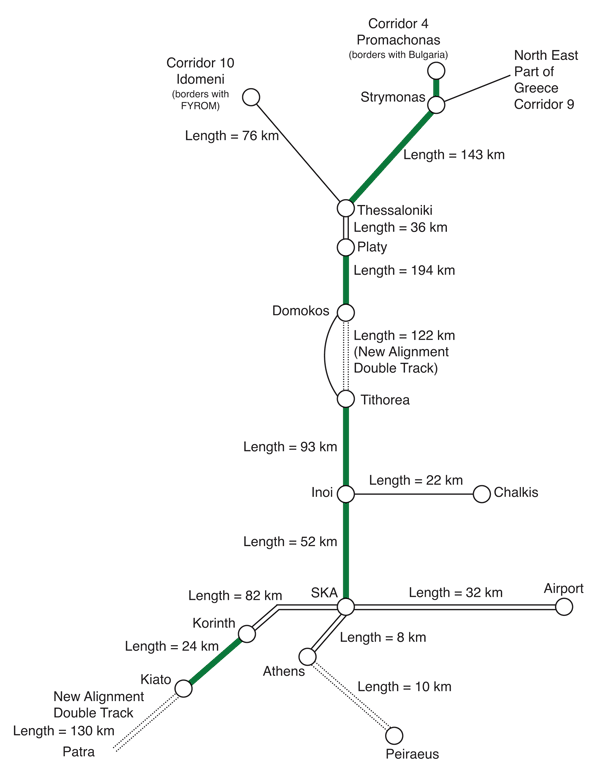

Figure 7 Completed railway track sections
Some of the remaining permits are already being processed by the respective authorities, while others require additional input from the contractor and/or railway or a modification of the zoning plan in order to proceed.
Cab radio installations have already been successfully completed (see Figure 8 and Figure 9).
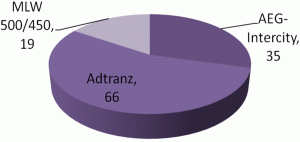

Figure 8 Cab-radio installations
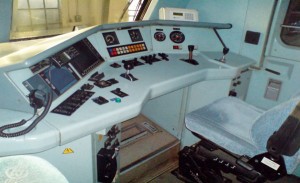

Figure 9 Adtranz 220023 fitted cabin
Maintenance and support
According to the contract, operation, maintenance and support was fully outsourced to the contractor for the duration of three years following temporary acceptance tests per track section. Then the railway would assume this role. Experience showed positive results for the project team working shoulder-to-shoulder with the contractor to obtain hands-on experience, however, some synchronisation issues had to be managed, since operation and maintenance time starts after a successful temporary acceptance test of a track section, as each is delivered at different dates.
Training
This encompasses the training of a group of 30 engineers who will carry out TAC 1 level support of the system since the railway plans to in-source operation and maintenance, following the expiration of the outsourcing contract. In addition, a group of 100 power users (dispatchers, station masters, loco drivers, line personnel, etc.) will be trained to act as trainers for their colleagues. However, experience has shown that it is sometimes difficult to maintain consistent training level quality. Workforce mobility can negatively affect the process and re-training cannot always be avoided.
Operational plan
The GSM-R system also acted as a catalyst to help the homogenisation of railway operational procedures. This was very important when developing the Numbering Plan, which is actually a live process. Different sets of parameters had to be taken into account, such as OSE’s current Operational Plan always checked against EU interoperability constraints. Original work was carried out in order to develop, clean and codify the system data repository and establish sets of common codes that fed the Numbering Plan. One had to be very systematic to handle scope creep and perform expectation management.
Conclusions
Conclusions can be grouped in two sets – technical and administrative – based on lessons learned on return of experience from the people involved and some recommendations can be made to anyone planning or implementing a GSM-R system.
On the technical front, it is important to start off with a solid RF design and to set procedures in order to continuously monitor the state of the frequency band regarding interferences or blocking issues and actively pursue reporting/escalating to appropriate authorities that have agreed to participate in policing the frequency band. Also, regarding network planning, homework has to be done in advance in order to design a very secure network from the side of user permissions, addressing and routing. Since it is not always possible, given a specific budget, to avoid some single points of failure, it is very important to identify all such risks, evaluate their impacts and provide a roadmap that minimises downtime, thereby boosting redundancy of the system and ensuring a higher level of business continuity. A Test Lab would provide invaluable assistance to test system modifications or upgrades. It is therefore important to back-up the efforts of the UIC towards establishing a European Test Lab. Last but not least, the standardisation of GPRS for ETCS Level 2 should be accelerated as this would significantly simplify operation and maintenance of the entire system.
Even more important lessons apply to the administrative side. Here, the key conclusion is that GSM-R is a top-down strategic decision. Therefore, it requires the political backing to successfully deploy such a system. It is definitely not a bottom-up approach, but it is up to the Project Manager to keep all stakeholders informed from the beginning through all the stages of the project, to the end, thereby ensuring their early involvement, in case it is required, to easier avoid bottlenecks. The GSM-R system also acted as a catalyst to help the homogenisation of railway operational procedures and harmonisation to European standards.
About the Author
Mr. Melissinos is an Information Technology & Telecommunications Engineer, specialising in the deployment of IT&T systems and services. He has over 20 years experience in managing large deployment projects at national or international levels. He currently works at ERGOSE, where he helped prepare the specifications and tender documents for GSM-R along the main railway axis Athens–Thessaloniki and managed testing and commissioning of station hightech equipment for the Athens Suburban Railway. Mr. Melissinos has participated in numerous conferences and workshops as a speaker and is the author of many publications in international proceedings.
Issue
Related topics
European Rail Traffic Management System (ERTMS), Global System for Mobile Communications – Railway (GSM-R), Signalling, Control & Communications





